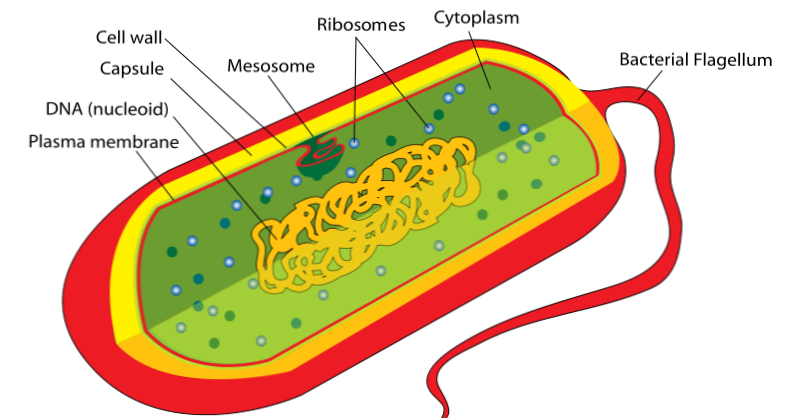Cells are broadly divided into prokaryotic cells and eukaryotic cells, according to whether their genetic materials are enclosed by a nuclear envelope or not.
Prokaryotic cells:
- Prokaryotic (pro-primitive, karyon-nucleus) cells are the most primitive cells. They do not contain a definite nucleus
- They are comparatively smaller.
- The cells have very simple organization.
- Cell organelles are absent.
- The chromatin bodies remain scattered inside the cytoplasm. Such a type of nucleus without a nuclear membrane is called a nucleoid.
- eg. Bacteria, Blue-green algae, Mycoplasma, PPLO (Pleuro Pneumonia Like Organisms), etc.
Eukaryotic cells:
- These are believed to have evolved from prokaryotes.
- Eukaryotic cells are larger than the prokaryotes.
- They show better structural organization and increased functional efficiency than prokaryotes
- Membrane bound cell organelles are present.
- They contain a definite nucleus.
- The chromatin bodies are enclosed by a nuclear membrane.
PROKARYOTIC CELLS
- The prokaryotes are single celled very small organisms measuring usually less than a micrometer (um) and generally not bigger than 3 mm.
- A definite nucleus and many membranous structures are absent.
Internal Structure
- Prokaryotes have a cell wall surrounding the cell membrane (except in mycoplasma). The fluid matrix filling the cell is the cytoplasm.
- There is no well-defined nucleus. The genetic material is basically naked, without a nuclear membrane. It is called a nucleoid.
- In addition to the genomic DNA, many bacteria have small circular DNA outside the genomic DNA, called plasmids.
- A specialized differentiated form of cell membrane called mesosome is the characteristic of prokaryotes. They are essentially infoldings of cell membrane.

Beginning from the outermost structure and moving inward, prokaryotes (eg a bacterial cell) have some or all of the following structures
- Cell envelope (and modifications)
- Cytoplasm & its components.
- Nucleoid & other genetic materials.